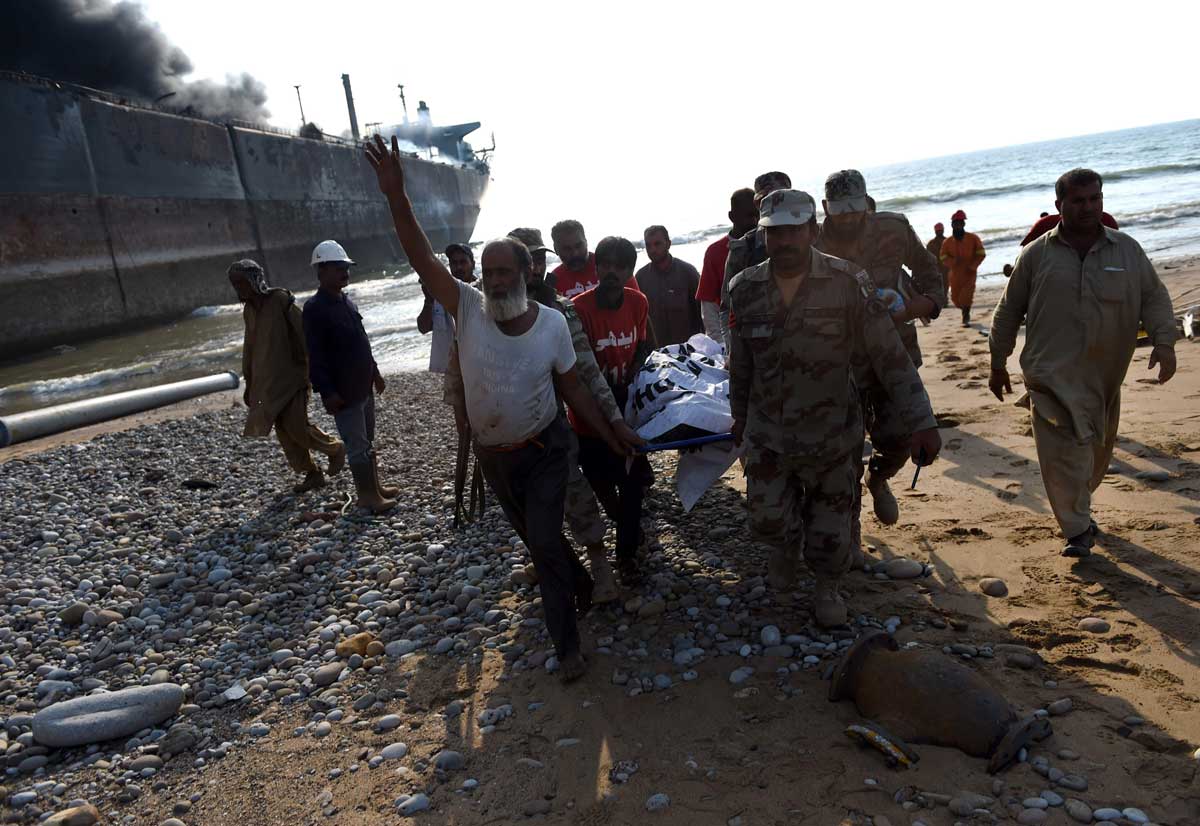The reported death toll obscures the true horror of what happened in the Gadani ship-breaking yard in Pakistan on Nov 2 when an oil tanker being disassembled caught fire.
Twenty-six dead is the count so far, based on workers’ records and the body parts recovered. But the true scale of this disaster, measured by the number of lives lost alone, will simply never be known.
And that’s because, for the most part, there is no record of how many people were working on the tanker when it went up in flames.
These are contract employees without names or documents, who are happy to get meagre wages for the dangerous work they do.
They are hired without paperwork, thanks to an exploitative contract system.
No IDs or employment letters are issued.
They ask no questions and – if they do dare to demand basic safety measures, protection and medical services – are ignored by the mafias that run the Gadani ship-breaking yard.
If they protest, they are fired and if they organise unions, the shipyard owners uses goons and sometimes state machinery to crush them.
What they get paid depends on what category of worker they fall under.
A 12-hour day working with little or no protective gear under back-breaking conditions may fetch 600 rupees (S$12.60) to 750 rupees.
There is no dedicated dispensary at the yard, and the nearest medical facility is a rundown “hospital” – reportedly run by the very same contractors that exploit these workers.
In life, they were invisible and uncounted and, in death, they have left no trace of their existence.
Such was the intensity of the blaze that firefighters saw the water they were spraying evaporate before it even touched the flames.
Many workers were incinerated in a blaze that reduced bone and flesh into ash that was then swept away into the sea.
We will never know how many were lost but one can draw estimates based on the number of people needed to break down a vessel the size of the 24,000-tonne tanker.
Ship-breaking Mazdoor Union president Bashir Mehoodani estimates at least 200 workers would have been needed while others say the number could be as high as 400.
Deaths and injuries are common at Gadani but never really make it to the news given that they – until now – occur not in large single incidents but in isolated ones.
Explosions and accidents are the main cause of deaths but, again, undocumented are the effects of long-term exposure to hazardous gases and chemicals on the workers.
Nevertheless, a look at the figures over the years points to clear neglect and criminal negligence by the Gadani ship-breaking yard authorities and government departments.
If the lack of basic health facilities and firefighting equipment is shocking, given the nature of the work done at Gadani, it will come as no surprise that even a single dedicated ambulance was not available.
In this context, it seems silly to mention the basic procedures that should be followed when disassembling an oil tanker, but mention them one must.
In ship-breaking lingo, this is referred to as “hot work”, and in the case of a tanker like this, it must be preceded by a thorough cleaning.
The remaining oil has to be manually pumped out using small air-operated pumps and even buckets – a time-consuming process.
Then, after further cleaning, huge air blowers and fans are used to dry the residual oil, which again takes several days.
After this, a certified chemist must give the all-clear and only then can the actual work begin.
These protocols were not followed at what we proudly boast of as being the world’s second largest ship-breaking yard, and all for the sake of greed and healthy profit margins.
The federal and provincial governments ask no question, and why should they when the revenues keep rolling in?
Work at Gadani has picked up again and the production line has to move along at a rapid clip to make sure that bank accounts remain healthy.
And if the wheels of unfettered capitalism have to be greased by the blood and ashes of the nameless dead, then so be it.

Get MyPaper for more stories.





